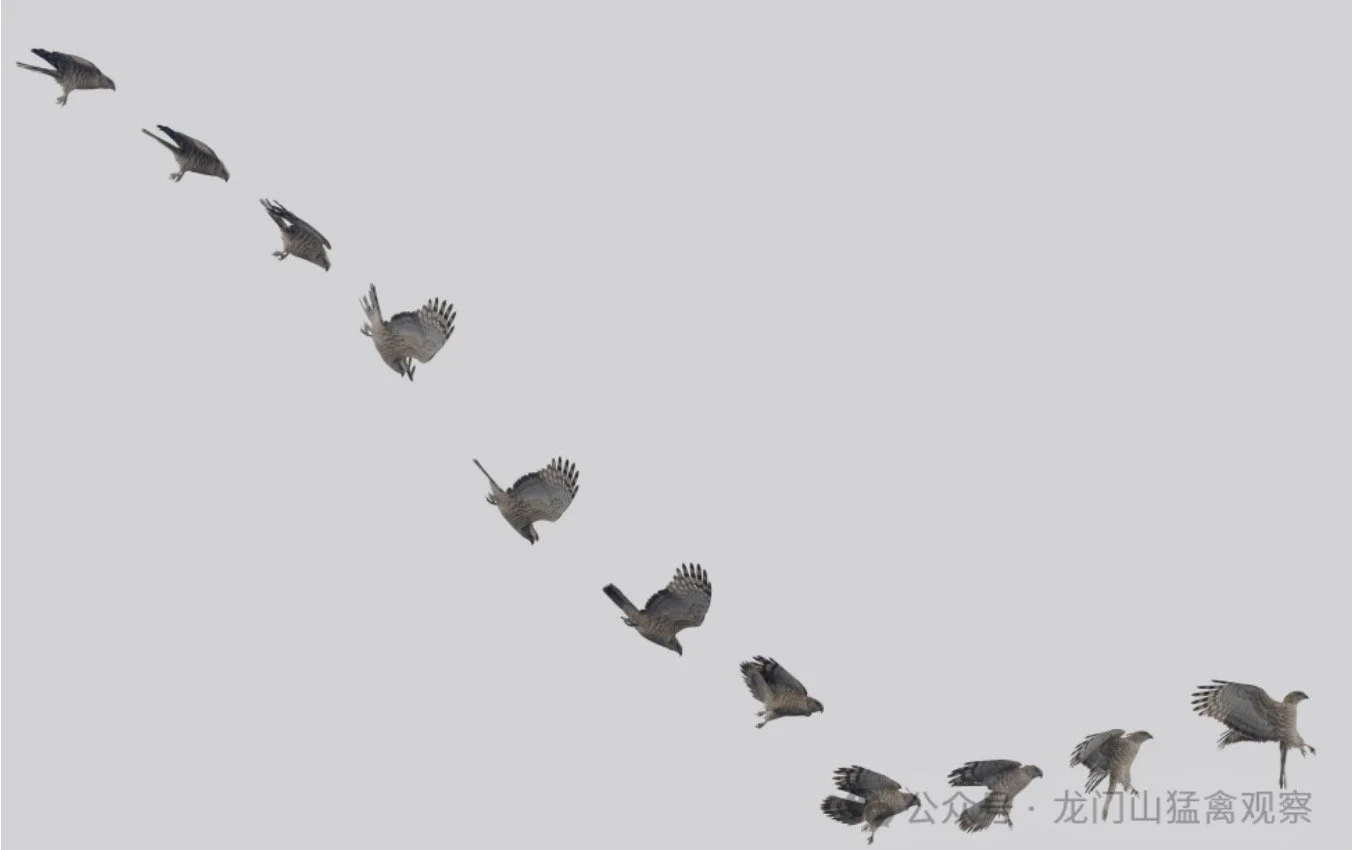🦅4.13 Raptor Station: 2024 Chengdu Longmen Mountain Raptor Monitoring Report 4
This week was mostly cloudy, with a slight decrease in the number of Common Buzzards, while the numbers of Eurasian Sparrowhawks and Northern Goshawks saw a significant increase. The Brown-capped Pygmy Falcon was recorded for the first time this migration season, setting a new record since formal monitoring began—the Himalayan Griffon Vulture. (Earlier, Dr.He had already recorded the Himalayan Griffon Vulture in the Longmen Mountains.)
Here is a brief summary:
Total data for the week: From April 7 to April 13, a total of 989 raptors were identified at Dutongyan, Chongzhou. At Yangtianwo, Dayi, there was 1 record, with 58 raptors identified across 9 species. At Tiantaishan, Pengzhou, there was 1 record, with 21 raptors identified across 5 species. At Puhong Road, Dujiangyan, there was 1 record, with 84 raptors identified across 10 species.
On April 8, 1 Black Stork was recorded both at Dutongyan and Puhong Road.
During the Qingming Festival, the weather was mild, but Chengdu experienced frequent night rains (so be mindful of safety when heading up the mountain). After the rain on Monday, the air was so clear that the landmark buildings of Chengdu could be seen from the Dutongyan monitoring point, even as far as the Liangfengya monitoring point in Longquan Mountain to the south. Observers noticed that Copper Skinks had begun their activities, and many flowering plants were blooming, which signals that all sorts of small critters are getting ready to provide energy to the upper-level consumers.
The number of Common Buzzards was slightly lower than last week, and we are about to enter the season of the smaller raptors. The bad news is that identification will become incredibly difficult, but the good news is that species diversity is increasing :) On Wednesday, the Brown-capped Pygmy Falcon was recorded for the first time this season, singing and dancing. The massive silhouette of the Himalayan Griffon Vulture also glided across the sky over the monitoring point. As temperatures rise, Common Buzzards and Crested Honey Buzzards will complete their relay, and an important period for raptor monitoring in this project is approaching.


